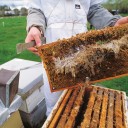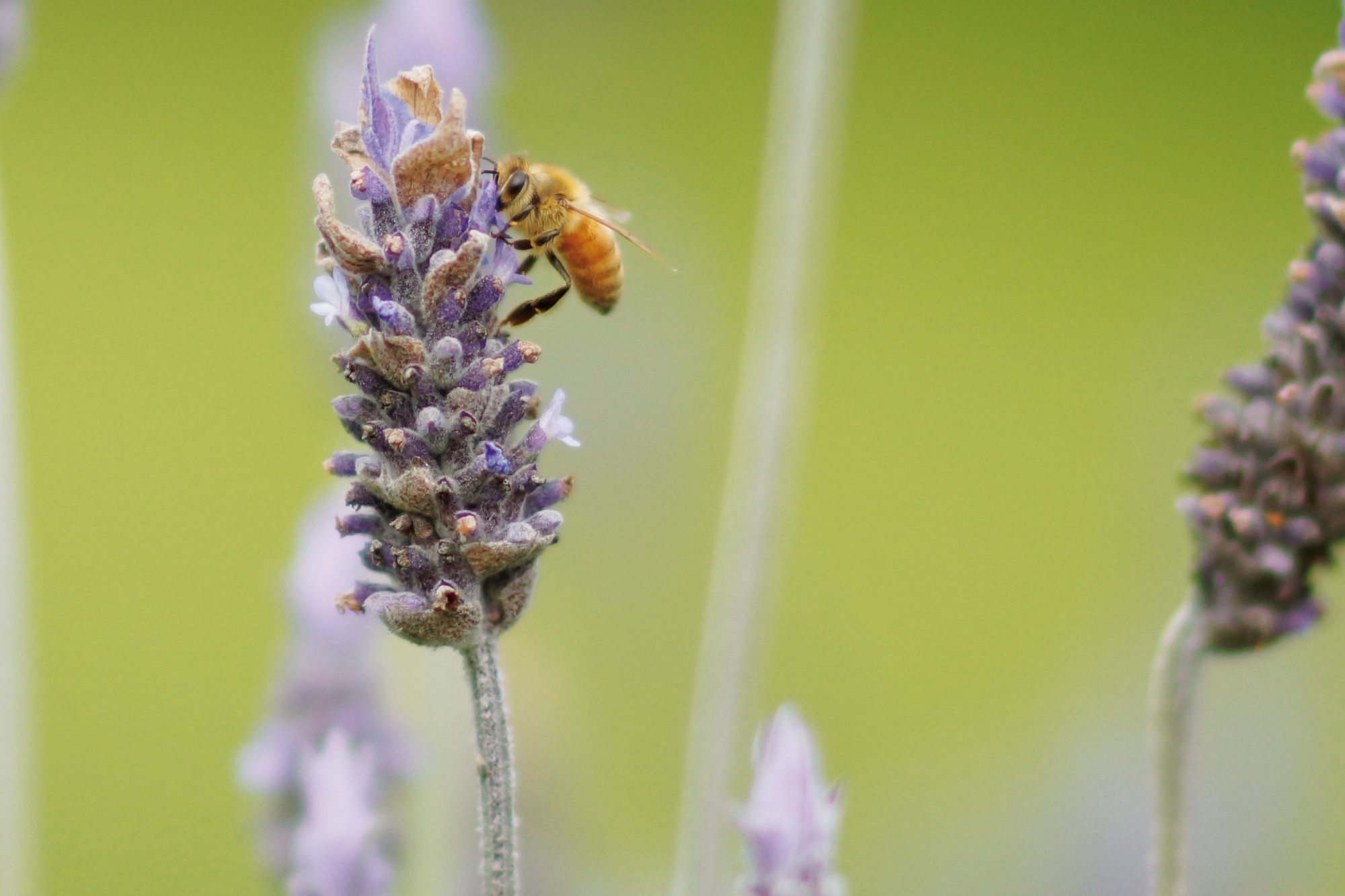
Keeping the Bees
As the spectre of Colony Collapse Disorder and plummeting bee populations engulfs the globe, so goes the fate of our horticulture, agriculture and the natural pollination of the living world. Yet hope may exist on Chatham Island, where beekeepers are focused on keeping the bees.
Earth’s living systems rely on droves of insects, employed in an eternal task of transporting pollen from one flower to the next, ensuring the fertility of the living world. But feral populations of honeybees are now extinct in the United States, and their virtual disappearance in New Zealand means you’ll be lucky to find a wild swarm.
Some scientists see the phenomenon—described as bee die-off in Europe or Colony Collapse Disorder (CCD) in the United States—as the marker of an environmental catastrophe that affects more than bees. In the past 25 years, numbers of insectivorous birds have halved and butterflies decreased by two-thirds on the European Continent and in the United Kingdom.
Honeybees, which pollinate at least one-third of the food crops we eat, have suffered the most dramatic declines in the United States, where the term CCD was first used in 2006. It describes sudden losses that averaged 38 per cent during that winter. Since then, declines have reduced slightly but are still cause for grave concern, with losses of 30 per cent recorded for the winter of 2010-2011, leaving the United States with fewer bee pollinators than at any time in the past 50 years, according to a United Nations environmental report.

In the same period, Canada lost more than 30 per cent of its hives, an alarming increase over the previous winter’s figure of 21 per cent. In Britain, the Beekeepers Association recorded a loss of 13.6 per cent in the winter of 2011, and research by the University of Reading suggests that between 1985 and 2005, England lost more than half and central Europe about a quarter of their bee colonies.
Countries in Asia and South America have also experienced unprecedented losses, and in China, pear trees in some provinces must now be pollinated by hand because there aren’t the insects to do the job.
The explanations for such declines are complex and include habitat loss, the effects of industrialised agriculture and insecticides, and the presence of diseases and parasites such as Varroa destructor. Rather than an insidious epidemic, CCD is death by a thousand cuts.
The Varroa mite (see sidebar on page 97) is the honeybees’ biggest enemy in New Zealand. Its menace can be measured by the fact that since its arrival some time before 2000, it has almost completely eliminated feral bees. Wild bees were once responsible for a large percentage of crop and pasture pollination. Now, all industrial-scale pollination must be done with managed colonies. In other words, honeybees in New Zealand are now totally dependent on beekeepers, as are the many plants that benefit from pollination by honeybees, and the species that live on and consume those plants. Anything that affects pollinators has a considerable impact upon the fertility and functioning of the entire ecosystem.
[Chapter Break]
Stripped of its forests to make way for pasture, Chatham Island appears squashed between low cloud and the sea. Clumps of akeake, tarahinau, karamu and koromiko stand in open farmland, remnants of the island’s once-dense forest. Large areas of impenetrable fern cover much of the north where half a dozen small, conical peaks rise like tepees from the undulating terrain. Sunshine hours are about half those in clement parts of the mainland; temperatures are rarely extreme but January’s average is a mere 14ºC. Yet, Chatham Island may be a crucial last stand for the honeybee. It’s one of the few locations in the world that hasn’t been affected by the Varroa mite, one of the principal contributors to colony collapse.
In the tiny settlement of Kaingaroa on the island, Michele Andersen and Mana Cracknell are building an ark. They have a hundred healthy hives, sheltered from the wind among clumps of long grass and in glades of the remaining stands of native trees.
Andersen had kept bees on the mainland before she met Cracknell, a descendant of Chatham Island Moriori. When the pair returned to Cracknell’s home on Chatham, they found few feral bees and just one hive—the dismal remains of a colony that struggled to survive the demise of its elderly beekeeper. Andersen also noted the poor state of pasture on the island. She called a public meeting and, as a result, a dozen people clubbed together to import 40 small “nucleus” hives from a Dunedin-based research company. That was in November 2008.
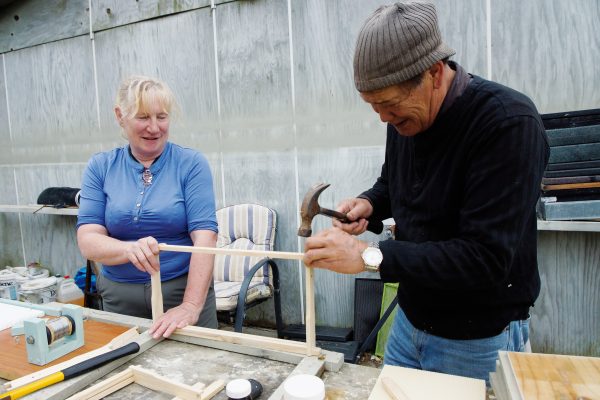
Being free of Varroa gives the bees on Chatham Island a great advantage over their cousins in most other parts of the world, but it also offers a warning for what lies in store in a world without bees.
“Look,” says Cracknell, indicating an area of bright green clover in the flat expanse of brown grasses that dominate much of the open country once starved of pollinators. “You can see that this place has been worked over by the bees. We’ve been counting the seeds in the flowers and they went from 25 per flower to about 120 this year.”
Clover depends upon bees for pollination and good pasture depends upon clover for nitrogen. On the mainland, clover pollination was performed by feral honeybees, but with their disappearance, pasture must be pollinated by bees from managed hives. Perhaps, in the not-too-distant future, feral colonies will once again populate Chatham pastures in sufficient numbers to do the job.
[sidebar-1]
Pasture improvement will make the production of beef cattle (there’s no dairying here) a viable part of the island’s economy. Currently, cattle roam far and wide over unfenced peat land in search of good grass and are often shot by hunters for sport.
But the pasture won’t be the only vegetation to benefit. Wild canola, dandelion, buttercup, flax, koromiko, introduced pohutukawa, matipo, tarahinau (also known as the turpentine plant) and the late-flowering yellow clover called maaku are sources of pollen necessary for good bee health. Gorse also, hunkered against the wind, raises bright yellow heads of pollen-rich flowers. (Gorse cake is the local equivalent of carrot cake and, says Cracknell laconically, there’s also gorse whisky.)
In their simple Kaingaroa kitchen, where the sea breaks on rocks a few metres away, Andersen pulls out a diary in which she records the rate and times of the flowering of particular plants.
“We’ve needed to understand, adapt and synchronise our style of beekeeping to the local environment, to the climate and the seasonal periodicity of the island. It’s different,” she says. “For instance, some plants flower twice.”
Pollen traps force worker bees to enter hives through mesh which scrapes off the pollen sacks on their legs. Andersen identifies the tiny grains by their pale colours, sorts and tapes them to strips of paper and inserts them into envelopes as part of a collaborative project with a researcher into the properties of Chatham’s native plant pollen.
It’s important, she says, to understand what the bees are feeding on and the nutritional value of the pollen they bring back to the hive.
Lack of nutritional variety is recognised as one of the contributing causes of bee mortality. It’s exemplified in the monocultures of industrialised agriculture where the hedges and weeds, which formerly provided the diversity of pollen that bees require, no longer exist.
On the mainland, changes in farming practices and economies have radically reduced areas which once would have provided pollen-rich plants for bees. Small family holdings have been turned into large dairy farms where the paddocks are virtual bee deserts.
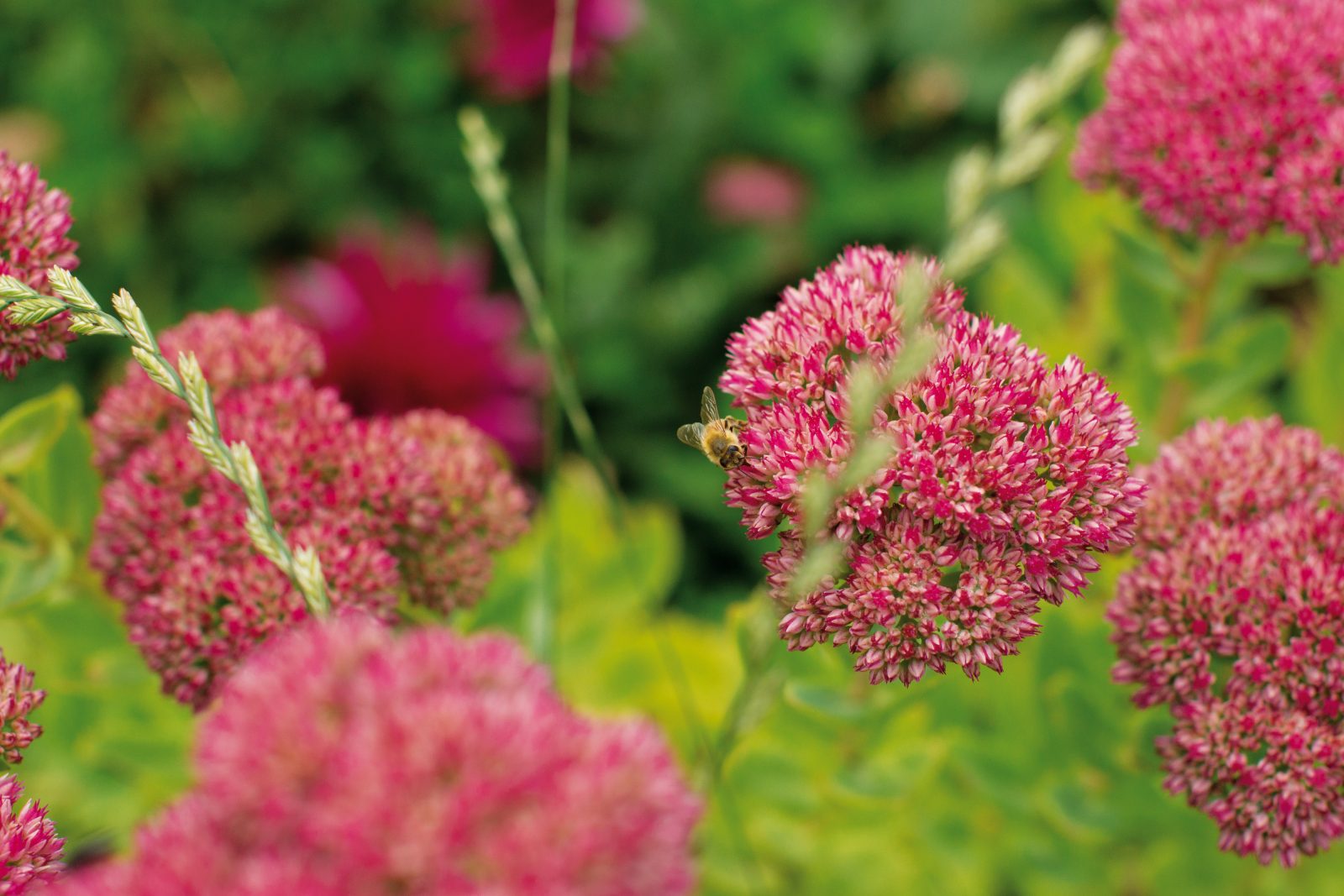

And, as on the mainland, bees on Chatham Island are also facing the effects of the increasing use of pesticides and herbicides by farmers as part of their crop-spraying and gorse-eradication programmes. Many of these plant-protection products have a neonicotinoid chemical as their active ingredient.
Neonicotinoid insecticides, which are synthesised from nicotine and are used ubiquitously in horticulture and agriculture (see sidebar on page 102), are increasingly implicated in bee die-off worldwide. Their systemic mode of action means that they are absorbed into a plant, permeating every part, including the nectar and pollen. All insects, harmful or beneficial, that come into contact with the plant are affected—they are either killed or receive a sub-lethal dose that weakens them in some way and leads ultimately to their death. Evidence is accumulating of the long-term harm rendered by infinitesimal residues of these insecticides, which are water soluble and persistent.
“More information needs to be provided to the consumer about what products are being used, the short-and long-term effects of those products, what insects and plants or weeds are killed, and what else is being killed,” says Andersen.
Beyond parasites, habitat destruction and toxins, the reliance on farmed bees has also introduced the problem of in-breeding in bee populations—particularly in isolated locations. To combat this, Andersen and Cracknell have brought bee fertility expert Frans Laas to the island with 24 Varroa-free queen bees to add precious genetic bandwidth to the colonies here.
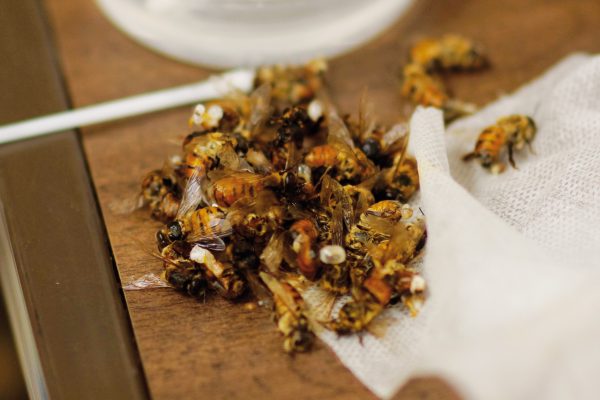
Laas will artificially inseminate the queens with semen from the island’s drones. It’s a fiddly business, requiring sterile equipment, fine needles and magnification, along with a very steady hand. It also solves another problem peculiar to the island. Cracknell explains: “For us, the difficulty is getting queens mated naturally. Local weather conditions often conspire to create a narrow window of overlap between queen mating flights and drone flying times.”
In nature, mating occurs under optimal conditions which aren’t always available here: a temperature of 18ºC and no wind.
A queen lives several years (drones and workers last just six weeks) and is ready for mating when she’s five days old. Mating happens only once in her lifetime.
When weather conditions are right, she flies to a height of 30 to 40 m where the drones, with their large eyes and acute sense of smell, detect her and converge. It takes 15 to 20 of them to adequately fertilise one queen, and in the act, which takes place in the air, each drone dies as his stomach explodes on ejaculation.
No need, therefore, to feel pity as Laas takes a (stingless) drone between thumb and forefinger and squeezes until a blob of white goo exudes from the insect’s rear end. He examines two tiny horns extending from the goo. If the tips are brown, the drone is mature and Laas places it beneath a machine with a fine needle, turns a knob and the semen is aspirated into the tube above the needle.
In order to find enough mature drones, about 30 bees are squeezed. It’s like popping seed heads, he comments, as the pile of discards increases.
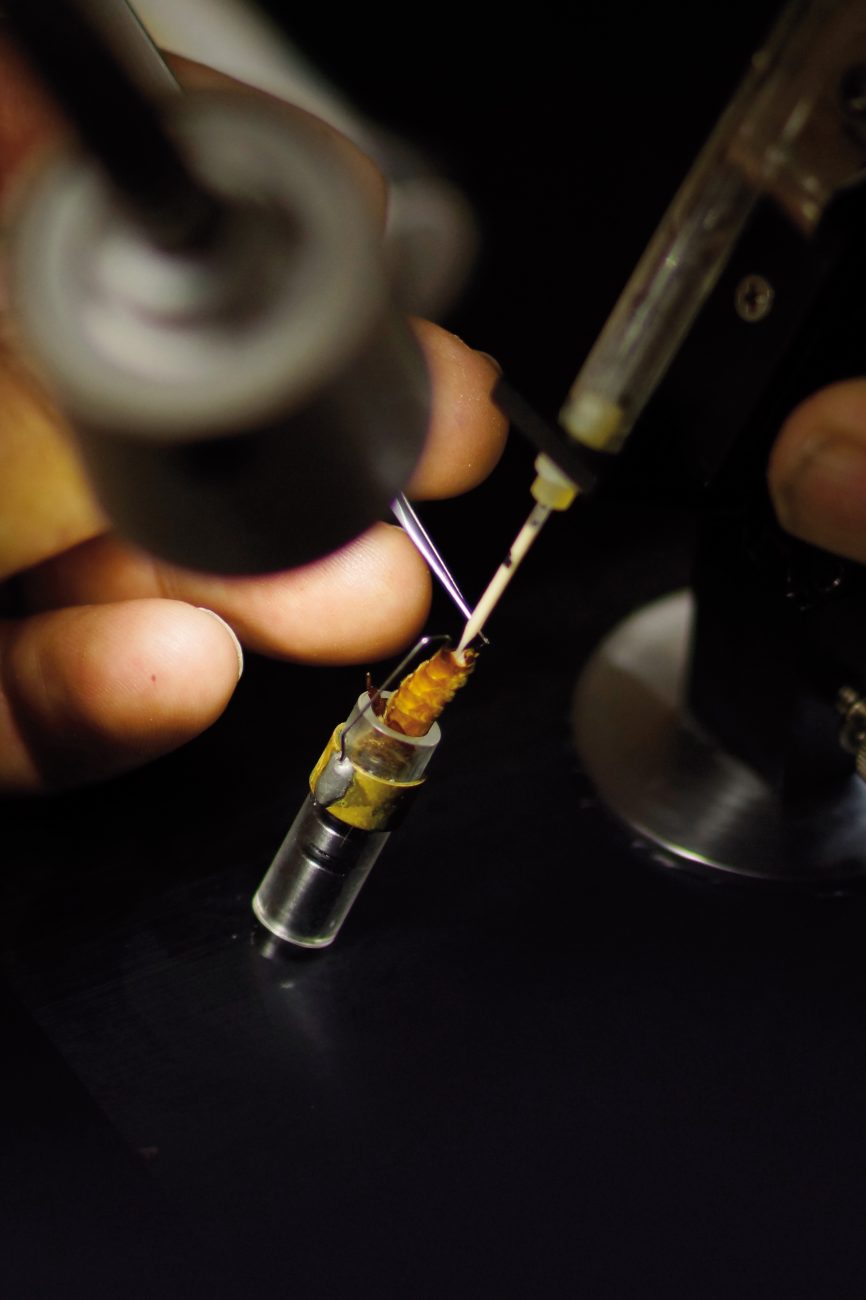
When the tiny tube is full of semen, Laas opens a box containing a queen, labelled 23, that has been sedated with a whiff of carbon dioxide—which, fortuitously, also stimulates her ovaries. Laas inserts her headfirst into a phial then, with a pair of miniature tweezers, pulls out her stinging apparatus and inserts the needle attached to the tube of semen. She receives eight to 10 microlitres before being put back into her box to await delivery to one of the hives.
She, along with her cohorts, will be monitored and fed during the bleaker winter months. It takes two years to bring a hive to full productivity so that it can be self-sustaining over winter.
“By comparison with most other queen-breeding programmes,” explains Andersen, “our modelling has focused on a wider range of desirable qualities. For instance, we have set out to develop a bee that can survive and perform under adverse food and weather conditions.
“Producing large numbers of queens is not a problem. Our capability is limited only by the amount of beekeeping infrastructure available to us on the island.”
The hopes of the island, perhaps of the productivity of the mainland as well, rest on the fortunes of Chatham Island’s queen bees and their colonies, which, like ‘number 23’, will each lay up to 2000 eggs a day come spring.












